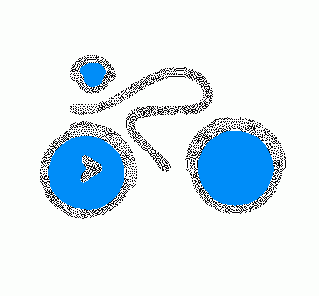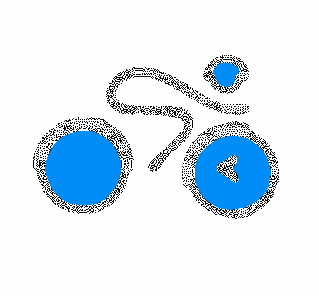| Newsletter - 2010 Archive |
 |
Cycling Club |
 |
| Newsletter - 2010 Archive |
 |
Cycling Club |
 |
Next--->
|
There was a message on the discussion forum looking for night riding tips. Concerns ranged from staying awake, to how much to light is enough, to having fun night riding. As he's done before on other subjects Ron offered some unique wisdom on the night riding. Alex had an interesting follow-up suggestion. [EF] Night Riding Riding with sleep deprivation is a challenge, indeed, and you are wise to give it some forethought. Personally, I like riding at night, which is a good thing because it doesn't matter what time a 400K starts, I'm going to be riding at night. In this case, a 9:00 PM start (21:00 o'clock?) lets me get the night riding out of the way first while I'm less fatigued. Staying awake is toughest for me in the early morning hours right around sunrise. It is quite possible to fall asleep while riding, although you never find yourself falling asleep on the bike -- you find yourself waking up on the bike. This is to be avoided for myriad reasons. I'm not above taking a couple of caffeine pills, like NoDoz or Vivarin, when I start getting sleepy. A power nap will work wonders, too, fifteen minutes, tops. 'Arold 'as a technique that I've used with success. It involves straddling your bike, position your elbows on the brake hoods with your hands clasped together, rest your forehead on your clasped hands and go to sleep. When you get to a deep REM sleep your knees will buckle and you will wake up before you hit the ground. If you see me in this position, please don't wake me up to see if I'm all right. A fifteen minute nap usually lets me fight off sleep for another couple hours, which is enough to get me through the night. Seeing where you are going isn't as hard as it sounds. Out of the city it gets really dark and even a little bit of light lets you see where you are going. Your eyes will adjust to the darkness, too. The new generation of bright LED lights, like the Ixon, will let you descend at 70 km/h (but not safely). The problem now is not how to get more light, but less. If you are riding behind someone and you are using a high powered light, they are going to be continually riding into their own shadow. They are going to have trouble seeing where they are going no matter how powerful their light is. Ride a little bit off to the side, besides, drafting at night is not so bright (if you catch my drift). A high powered light for riding alone or out in front, coupled with a lower powered light for riding in a group, is a good combination. Oh, yeah: NO FLASHING HEADLIGHTS, especially if you are riding behind me. Battery powered lights have a way of running out of power at the most inopportune time. Take your light back into the closet and try changing the battery in the dark. This is a skill best learned at home before you need it. And while you're in there, practice changing your tire, too (you'll find out why). While I'm on the subject of lights, don't forget your tail lights. One tail light is not enough to be seen and recognized as a bike from a distance. You need to supplement your light with reflectors. Put reflective tape on your fender (if you have one) or your chainstays (if you don't). Wear as much reflective gear as you can. If you are riding in a group, flashing tail lights will not be popular with anyone riding behind you. Put the light in steady mode. Plus, there is some question of whether flashing lights produce target fixation in drunk drivers. As for having fun, I'm afraid you're on your own. If you can't have fun riding at night, you've got the wrong sport. It's peaceful. The traffic is low (but probably either drunk or as sleep deprived as you are). If the stars are out, they are amazing. I've even seen the Northern Lights riding up the Yellowhead. You don't get to do that in the daytime. High speed descent at night will keep you focused on the task at hand -- you wont be bored. In reference to Ron's comment: "Battery powered lights have a way of running out of power at the most inopportune time. Take your light back into the closet and try changing the battery in the dark. This is a skill best learned at home before you need it. And while you're in there, practice changing your tire, too (you'll find out why)." Alex has a thought: I suggest rather than practicing changing your batteries and your tire in the closet, you turn all the lights out in the bathroom and practice in the shower - cold water only of course. Practice until you can change the batteries without getting water into the light ;)
- June 10, 2010 |